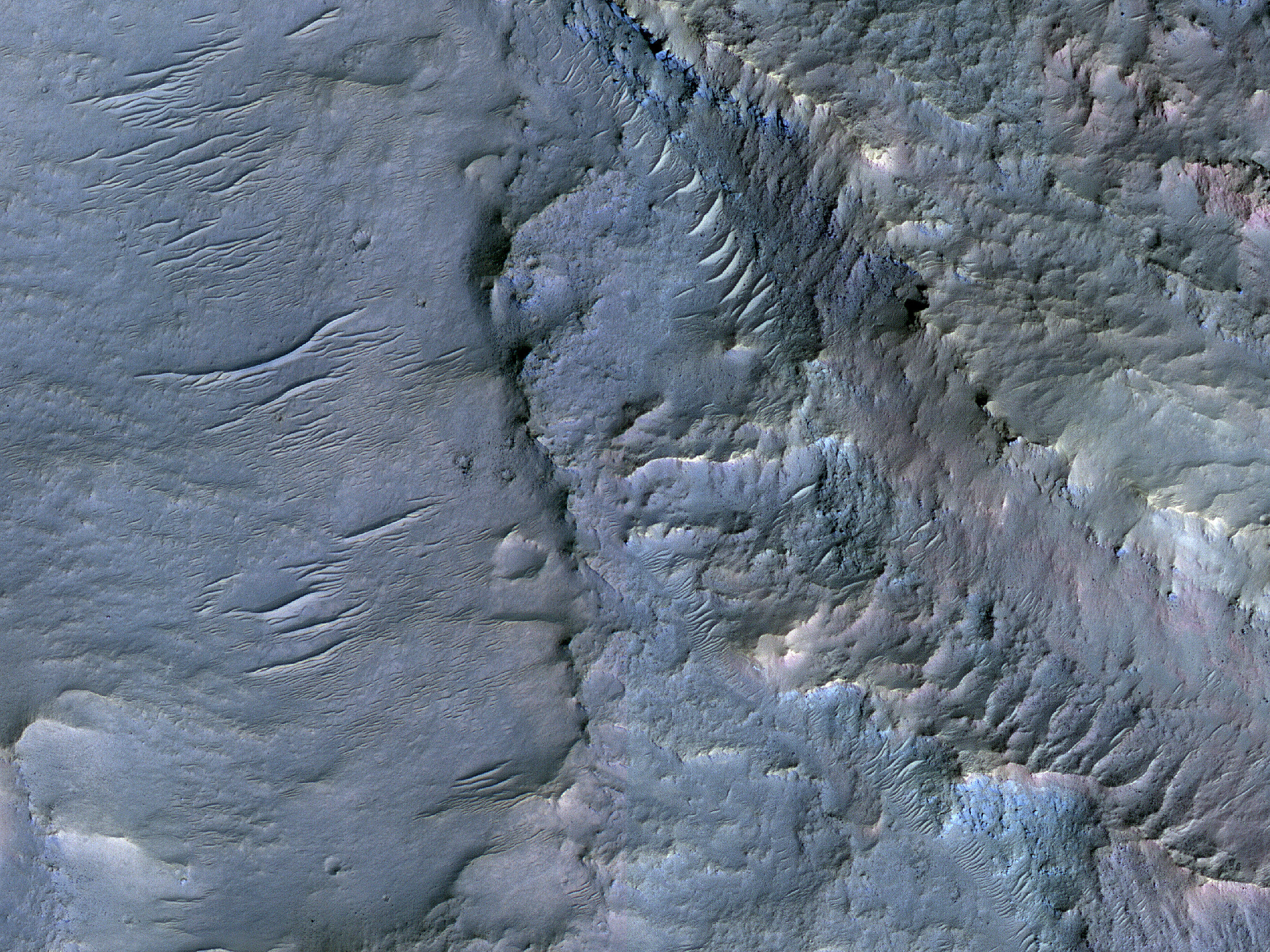This image showcases stunning bedrock outcrops just off the edge of Hellas Basin, one of the largest and deepest well-preserved impact basins on Mars. At first glance, a close-up of the bedrock appears to
shimmer with brilliant pink and blue hues, almost like rubies and sapphires. Are our eyes playing tricks on us? Not quite!
If you’re familiar with Mars imagery from HiRISE, you might already have a hunch about what’s happening here. HiRISE captures color images using three broad wavelength filters: blue-green, red, and near-infrared. These are then combined into a red-green-blue (RGB) composite to create what’s known as a “color-infrared” image. You may have heard the term “false color,” but that can be misleading—there’s actually nothing false about it. The issue: human eyes can’t see near-infrared light, but our instruments can, so to help us visualize how bright are dark something is in near-infrared data, we represent the variations in infrared as red, which the human eye can see.
So, if these colorful rocks aren’t gemstones, what are they? Based on other datasets, the pinkish rock would appear white, cream, or perhaps a light grey to our eyes, so this could be a number of other common rock-forming minerals, which has been difficult to nail down with available spectral datasets. The underlying bluish rock, on the other hand, is spectrally consistent with olivine, a mineral that, as its name suggests, is usually olive green.
So, no treasure troves of rubies or sapphires to be found here, but here’s a fun fact: peridot, a variety of olivine, is a semi-precious gemstone and the birthstone for August.
ID:
ESP_086875_1525date: 6 February 2025
altitude: 257 km
https://uahirise.org/hipod/ESP_086875_1525
NASA/JPL-Caltech/University of Arizona
#Mars #science #NASA
